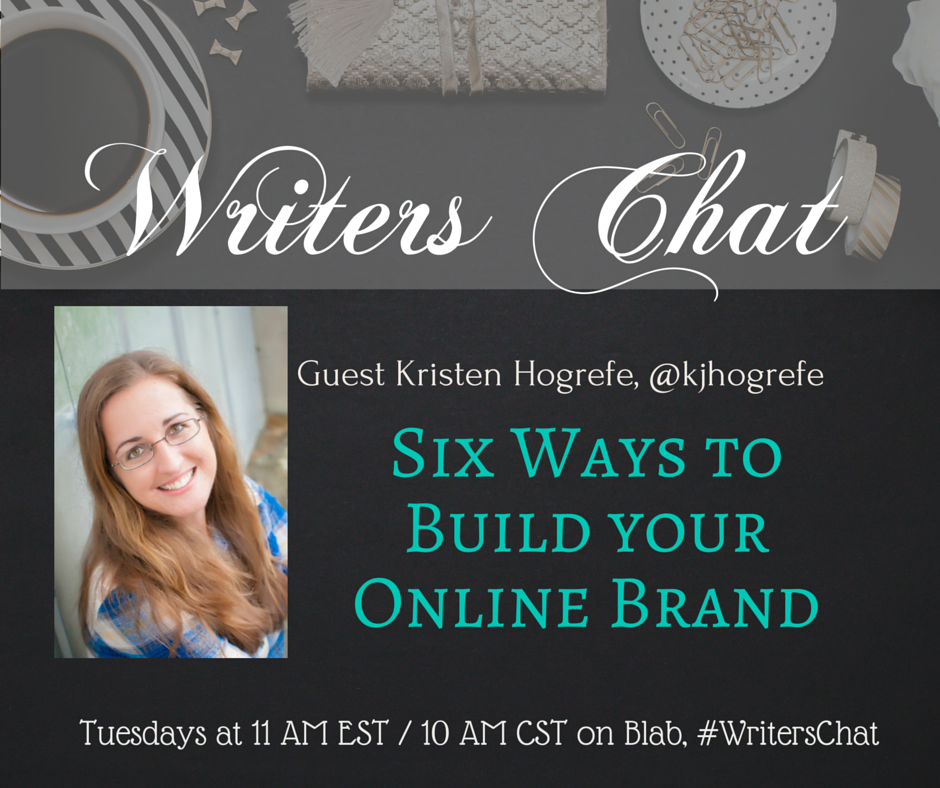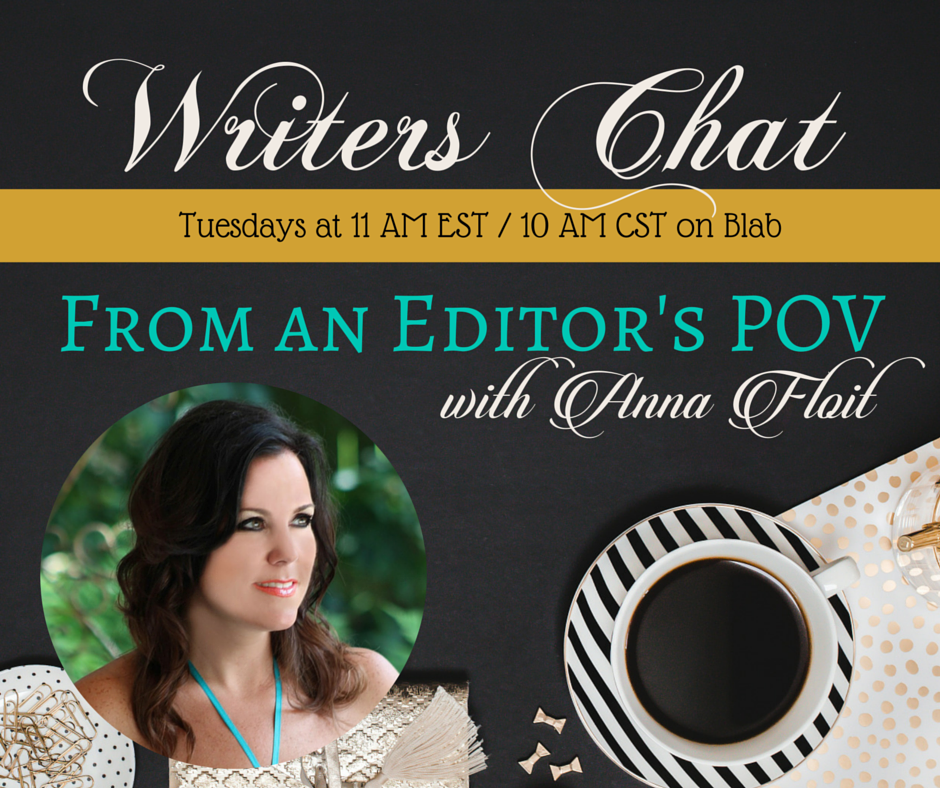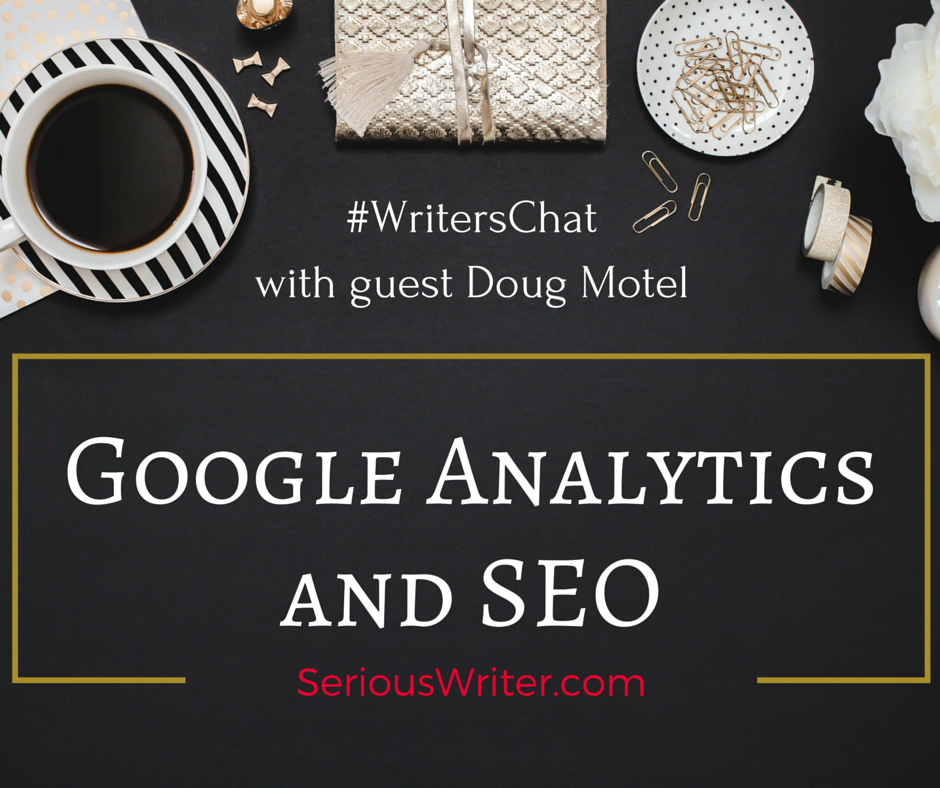
Six Ways to Build Your Online Brand
Today’s guest is author Kristen Hogrefe, facilitator of the Build Your Brand Program. Today, we cover six ways to build your online brand.

Today’s guest is author Kristen Hogrefe, facilitator of the Build Your Brand Program. Today, we cover six ways to build your online brand.

Anna Floit, owner of The Peacock Quill, (sweetly named in honor of her grandmother) started with Tyndall Publishers, worked with Thomas Nelson (who is now with Harper Collins), and has continued to build her career with big name publishers and authors, as well as writers ready to indie publish.
She started working with Lifeway recently as an editor on one of their production magazines—the September issue of Home Life magazine. We’re thrilled to have her today on Writers Chat. Check out the replay, the links, and the paraphrased transcript below.
Developmental substantive editing—“The Macro View” means making sure the work flows and makes sense, studying characters if it’s fiction, but that’s where the focus is on the editor’s end. Anna will also wordsmith it along the way to make it more clear.
Proofreading is “The Micro View,” which consists of grammar, punctuation, and line editing.
Fun fact: In her book Twirl, Patsy Clairmont credited Anna!
Since I’m not an agent, acquisitions editor, or publisher, I’m not looking at a manuscript to see if it’s publish-worthy. My job is to make authors to look their best. At that point, it’s up to an agent or acquisitions team to see if the book is marketable. Whatever an author brings, I put it into shape.
If it’s a self-publishing author, I give suggestions from a reader’s perspective. I really believe everyone has a story and that every story matters. It’s my job to validate my authors. All I’m doing is spitting and polishing! I maintain my authors’ voices so it sounds like them and not me. If an author uses the same word over and over, I teach them lessons on the thesaurus.
Work that I turn down is against my value system.
A lot of work is done through referrals, so there’s a bridge there. I also have an inquiry page on my website to help understand the project better.
Understand the value of a great editor.
Editing is really time-consuming. I don’t think a lot of people understand the methodology that goes into it. Grammar rules change all time, like the comma before the word “too.” She versus her…the world would be a better place if people used pronouns correctly! Often the price reflects the time and knowledge.
NYT Bestselling author Jon Acuff recommends to spend your money up front. “You have the rest of your life to market this book, so spend the money on an editor.”
A lot of editors do charge for sample edits because those are working hours. A friend’s grandfather always said, “If you hire your friends, pay them more.” It’s such a different opinion than what most people do.
Anna says, “I change passive voice into active voice a lot, and then let my writers know why I’m making the change. ‘As a child, my dad told me…’ That means it happened when the dad was a child. It should read, ‘When I was a child, my dad told me…'”
Anna:
I try to change the verbs into active. Passive voice uses a lot of helping verbs and I try to get rid of them whenever possible. Sometimes they just work, though.
Know your audience, know the rules…but sometimes they can be bent to say something better.
Anna:
Usually there is a range. A developmental edit with research is more expensive than a proofreading edit. I go by word count because fonts, margins, and font sizes are all different. On the low end, $8 for every 250 words. On the high end, it goes to $14 for every 250 words. I can often pick up through email communication if the person is a good writer, or if the project is going to take a long time. I’ll look at a sample chapter to get an idea of their writing style. There are a lot of factors.
Working with a bestseller changed my rate. Just like an actor gets paid more after they win a Grammy, this is our craft, and we have to do the same thing as we grow.
For someone starting out, you want to make sure you’re within the industry standard. Maybe start at the $4 per 250 word mark for proofreading to get some clients under your belt.
The Writers Market Guide may have a rate schedule as well. The 2016 Writers Market Guide Deluxe Edition ebook is 75% off for a limited time.
Someone who doesn’t:
Anna:
I like to build relationships with my authors. I don’t use e-lance or sites where you’re someone behind a computer. I want to get to know the person I’m working with and be accessible. I do have guidelines in place. Even if I’m working around the clock, I don’t normally send emails outside of typical working hours so I don’t give the impression that I’m on call at all times. I don’t want to let anyone down if I’m not answering their emails at nine o’clock at night.
Expectations and communication are important, so if someone isn’t willing to do that for you, it could be a red flag.
It’s typically around 500 words of copyediting—basically editing posts before they go live. It’s important to have a consistent voice and look polished. You may not be a writer but need to have content on your site. Having a professional editor look through your work can help clean up and find anything that’s missing.

Today’s Writers Chat was amazing – and we only scratched the surface inside the world of Google Analytics and SEO. Our special guest is Doug Motel, an award-winning writer and SEO and website coach.
Below the Blab replay, you’ll find Bethany’s notes from the episode. If they don’t make sense (ha!) make sure to leave a comment so we can clarify! Although, we definitely recommend watching the replay so you can learn from Doug himself!
Google gives you free tools, but you have to drop the info on the site so they can talk back and forth.
There is a Google Analytics Plugin you can use, but you can also get the code from Google and put in the website coding.
Have a gmail account. (Google hosted).
Google “Google Analytics” and create the account.
From the home page, Admin >
Note: Control + U pops up HTML.
Pretty soon near the top, you’ll see the [body] that’s the browser talking to all the things. “The body of the web page is coming.” The closing body tag is near the end of that. [/body]
In WordPress:
Appearance > Editor > Footer
The footer is at the bottom. You’ll see the “/body” which indicates it’s the end of the body section. Take the code and paste it in before the “/body” and save. It will drop the secret code into every page that has a footer.
[Tweet ““You won’t turn into a pillar of salt if you look at the HTML!” – @SiteOptimized #WritersChat #SEO”]
Will break it down to percentages – visitors coming from organic search
See the keywords – are people typing in things that brought them to you and discovered you.
Other sites linking to yours.
This needs to be high!
Don’t want all the traffic coming from this. These people already know you.
Behavior > Overview
Can put a time frame in here – perimeters (In the last year, what was my most popular blog?) It will default to a month view, but you can limit it, even checking only Christmas day, if you want. You can also see if traffic is coming from your blog or from Facebook.
Several things, but we mention in this episode that you can see which keywords were used, or if a blogger linked to it.
This is the #1 way to talk to Google – but what usually ends up in the title are the words “blog” and “about,” which are the default. Change the title tag so that Google sees it. Yoast calls it the “snippet.”
Keep it to 70 characters (not any longer). You’re already ranking for overall brand, so for example, Bethany’s post (If you Want to Date my Son…) use keywords “christian parenting” — or do a keyword discovery (Google Adwords for the keyword tool) — or “parenting Christian boys.”
The bounce rate shows the number of people who come to your site and leave immediately.
A “good” bounce rate depends on industry and business, but for a goal – shoot for no greater than 30%.
It’s on the first page – in Google Analytics.
It’s great to post outgoing links in your blog, but make sure you’re linking out to credible resources. Google likes it when we give great resources with established audiences. Just linking to your friends makes Google think you’re reciprocal linking – no value. #GoogleFootsie
[Tweet “If you have a sense of play and fun with this “game of Google,” you’ll move forward faster.” – @SiteOptimized”]
Use the Webmaster Tool, also called “Search Console.”
Doug created “Draw Talk Write” to help nonfiction authors draw out their mind maps. You can get a first draft done super fast.
If you find that you have dead links in a guest post, you can go back to those blogs and give them an updated link.
[reminder]We will definitely have Doug back with us. If you have questions about SEO or any of the notes didn’t make sense, let us know in the comments.[/reminder]